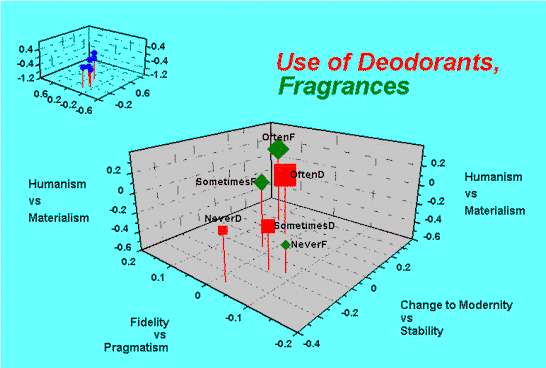
Copyright © 1994 ValueScope AB
Deodorants and fragrances constitute a market that increases dramatically as you move from southeast to northwest in the value space (Figure 1).

Figure 1.
Most of the well-known brands on the Swedish market cluster in a narrow range east of the origin, i.e., the middle segment (Figure 2).
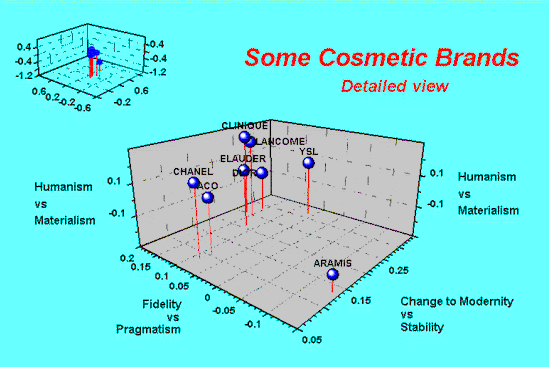
Figure 2.
The cosmetics market today is similar to the beer market a century ago but with some reverse starting points. Beer at that time was drunk mostly outside the home in taverns. It was also a drink for males. The market could dramatically increase when beer became a drink to have in your home, and when women began to drink it. In Sweden today, cosmetics and fragrances are used mostly by females and mostly when they plan to leave the house or have guests. However, the use of cosmetics is increasing as more and more males become customers and with the growing tendency to regard use of the products as natural, regardless of location or occasion.
Let us practice with a problem of product development and marketing in the cosmetics market and see how Consumer Valuescope helps.
Where in our value space do you find consumers for a cosmetic product with a very high unit price, say $100 a jar? Well, we ask the question and find this small segment of consumers for high-ticket cosmetics, and their location in the value space (Figure 3).
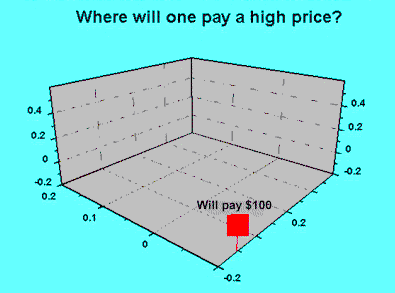
Figure 3.
What attributes should a good cosmetics product have? Should it make you feel good, or should it above all make you look good? Should it have tried and true ingredients, or ingredients suggested by the latest scientific discoveries? We ask these questions and plot the answers in our value space (Figure 4). The distance between the response "look good" and "willing to pay $100" is smaller than the distance between "feel good" and "willing to pay $100." And the distance between the response "latest science" and "willing to pay $100" is smaller than the distance between "tried and true and "willing to pay $100." Thus we know what to tell the product developer.
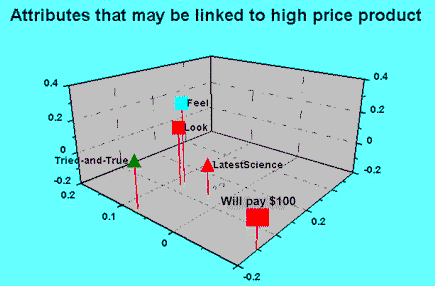
Figure 4.
Our attributs of "look good" and "latest science" do not overlap fully with "will pay $100". To simulate the position of the new product in our value space i.e. the market, we average the scores on the X-,Y-, and Z-axis for "willing to pay $100", "look good" and "latest science" and call this position NEW (Figure 5).
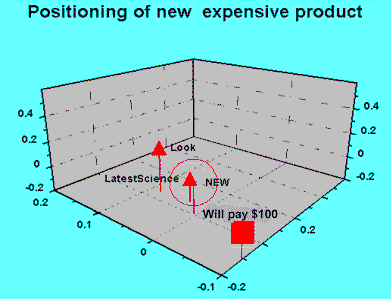
Figure 5.
This also allows us to position the new product in comparison to the competition (Figure 6).

Figure 6.
This is a chart so fundamental to the process of product development and marketing that we project it on the XY-,XZ-, and YZ-planes (Figure 7). We see that in every plane the new product has a special niche, but that it has not broken away from the generally narrow value area of the present cosmetics trade.

Figure 7.
The product and its potential customers are now defined. We locate its marketing channels by plotting in our value space the answer to the question where one normally buys cosmetics (Figure 8). We see that the new product is most easily sold through specialty shops and tax-free stores. Marketers thus learn that they can pay less attention to getting the product into drug stores and supermarkets, and also can go easy on department stores.
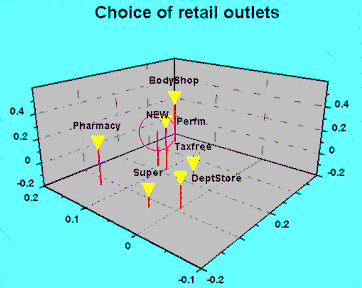
Figure 8.
When we finally place the new product among the media in the value space, we discover that advertising should be place not primarily women's magazines and fashion publications as is customary in the trade but in business and career-oriented weeklies (Figure 9).
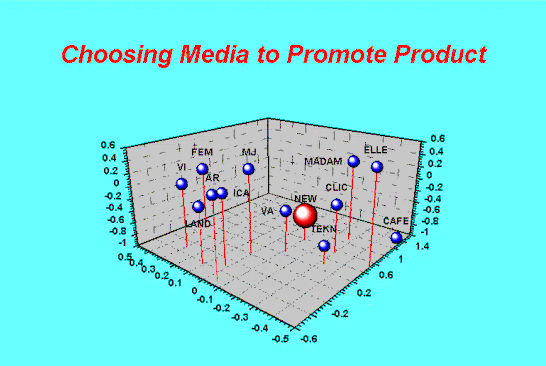
Figure 9.
Guided by the Consumer Valuescope we have created a new high-margin cosmetic product for the executive woman.
The above exercise is, of course, simplified. Actual market research may be more complex, and it would be highly confidential and thus difficult to report to a larger audience of students.